2019-2020 Year in Review

This year we wrapped up “tot school” for our oldest and began the 3-6 materials. It was a fun and exciting year (and I am already planning for the next school year!) Here’s a look at what we did from August 2019-June 2020.
Before I dive into of an overview of what we did, I’d like to share a couple of things just in case you are new to the Montessori Method.
During the first plane of development (from 0-6 years of age), the child is in what Dr. Montessori calls, “the absorbent mind”. They are soaking in everything around them like a sponge. This enables them to develop in a way that sets them up for success in their environment. If we are intentional with their environment, we can maximize this time and follow the child in both physical and mental growth.
There are four main areas of study at this age: Practical Life, Language, Sensorial, and Mathematics. Practical Life and Language work marked most of our child’s work this past year during the work cycle. In August, we began to hold space for a three hour work cycle in the morning at least four days a week and at some point this fall/winter we began also holding space for an afternoon work cycle (which is mostly spent outside during warmer months). A work cycle is an uninterrupted block of time. The key here is uninterrupted. We strive not to interrupt our child’s focus. It can be hard to strike a balance between this and inviting her to participate in practical life activities. What has helped me is remembering my role during this time is to observe (where the bulk of my time is spent), model (when introducing something new), and work alongside of my child or own my own.
We have a daily rhythm in our home and it basically looks like this:
- Wake + Milkies + Read Aloud
- Morning Routine (Breakfast, supplements, brush teeth, get dressed)
- Morning Work Cycle (Circle Time then Free Choice)
- Lunch
- Quiet Time (Read Aloud + Resting in Room)
- Afternoon Work Cycle
- Dinner
- Evening Routine
Enough preliminary information… let’s get to it! What did we do this year? I planned my year in themes (they are listed at the bottom of this article!) and then left space to observe and introduce materials/lessons as my child showed signs of readiness or an interest. There are definitely a few things I will do differently when our youngest is ready for “tot school” but my daughter LOVED “tot school” and got so much out of it. It is child led, encourages movement, and is developmentally appropriate.
Practical Life
This is a HUGE part of any curriculum for both 0-3 and 3-6 whether you are learning at home or in a classroom setting. This one is hard to give a complete picture of because practical life is not really on the shelf for us. It’s simply living our life. When I see that our child has an interest in something or I want to introduce something that isn’t met in our routines around the house, I will put it on the shelf. For the most part though, practical life experiences are organic and we shift our home to be accessible for her. For our portfolio next year, I think I am just going to use a check list to mark off what she has mastered, been introduced to, and is most interested in (mostly likely in a Google Spreadsheet).
Some of the most common practical life activities she gravitated towards in the home were: care of self (brushing hair, brushing teeth, washing hands, wiping self at the toilet, washing self, dressing self – but only sometimes!) pouring, scooping, dumping, peeling, cutting (with a knife, and scissors), snipping, feeding and walking the dog, washing clothes, drying clothes, dusting, cleaning surfaces, sweeping, mopping, vacuuming, and washing dishes.
Here’s a few examples of some practical life from this year:
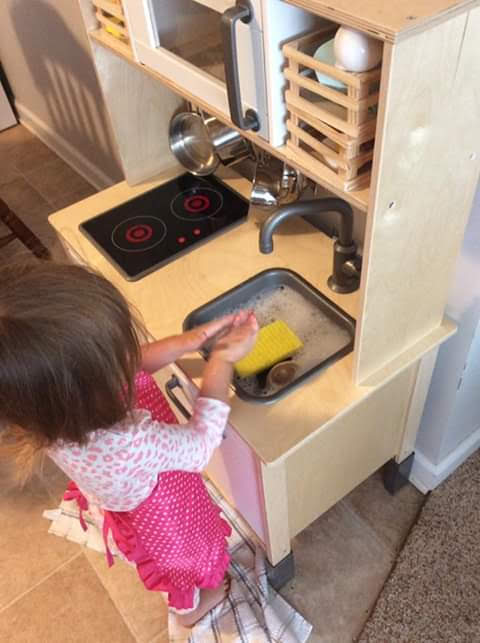
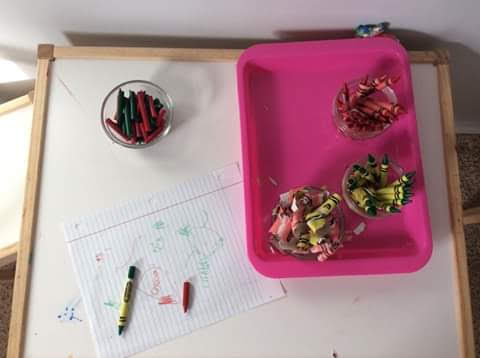
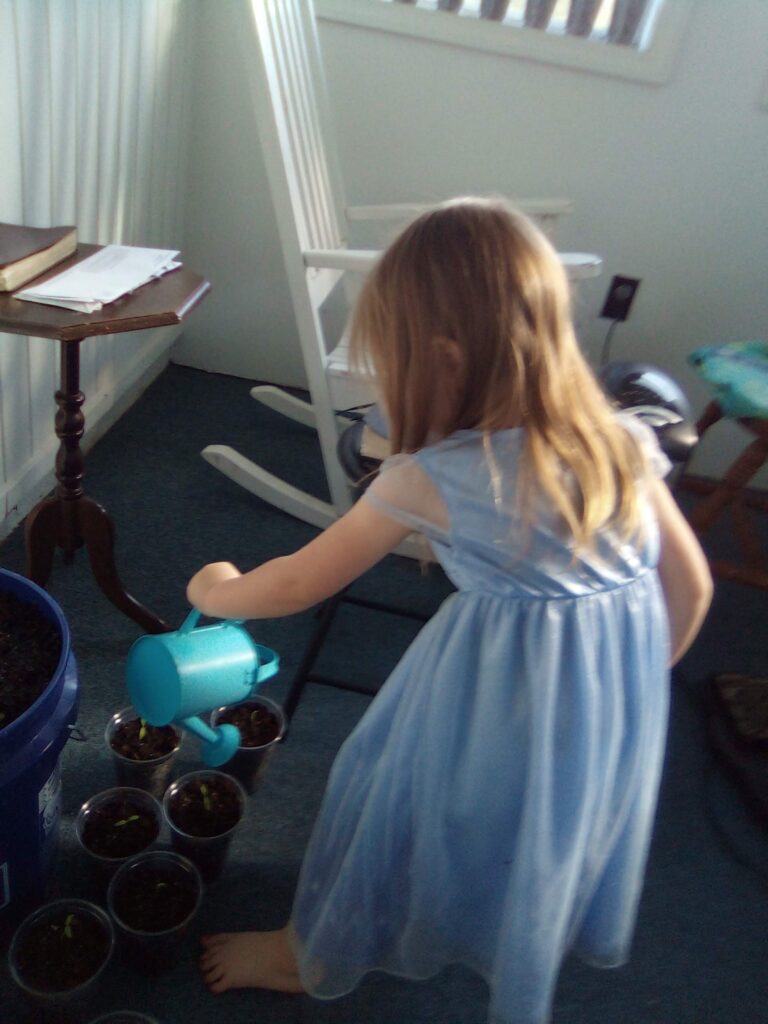
Language
This section encompasses quite a bit. It is pre-reading, pre-writing (both of which occur in practical life activities and sensorial activities as well), and cultural work for a 2-3 year old. In the next year we will do more with traditional Montessori language materials (such as the sandpaper letters and the moveable alphabet) and continue to dive into more cultural work. In addition to this, we seek to create a a rich culture of literacy in our home. We read aloud on and off all day and our children also see us reading and writing.
Cultural work is a broad subcategory under language that includes: art, music, dance, geography, history, biology, zoology, physical science, and botany. Often grace & courtesy lessons are grouped here as well but are sometimes given their own category or even placed under Practical Life. Much of this is included with language because you must lay the ground work for child’s vocabulary through exploration. Everything truly starts with language.
“Montessori Letter Work” is a regular in our book rotation. We introduced it before 2 and I know it will be a favorite resource throughout the 3-6 Montessori Classroom. I highly recommend it! It makes it easy to let littles explore letters PLUS it makes it very accessible for the parent to learn the right letter sounds to use and it models the proper way to introduce letters from a Montessori perspective.
Quick disclaimer: while we did introduce a letter with each theme and then recap them together, I do not recommend it at this age. It is important to follow the order of progression. Dr. Montessori was incredibly thorough in crafting her methodology. If we have patience and wait for each individual child (although it will be in similar windows) to be ready for each material, it will be a child-led learning experience where we are merely there acting as a guide vs. pulling a child through a learning experience. Even if your child is interested in letters and asking about them, don’t introduce the sandpaper letters. Fight the urge (I will with my second child!). Have fun with laying the ground work. Language development and sound games are definitely first!
Here’s a few of the language work activities from our shelves this year:
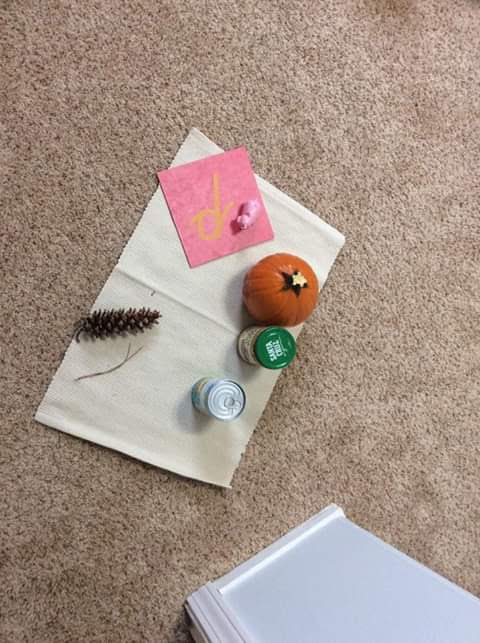
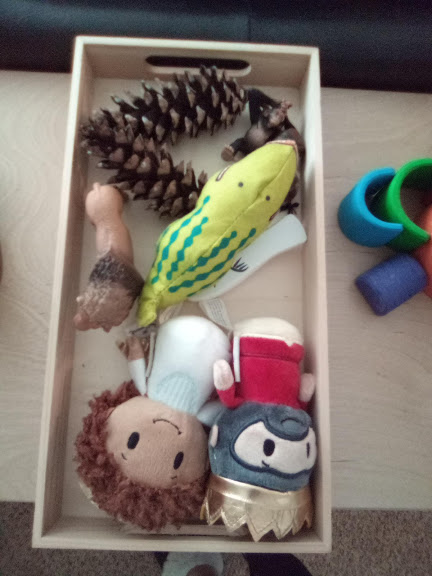
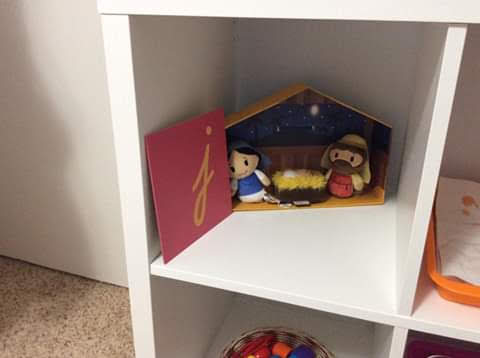
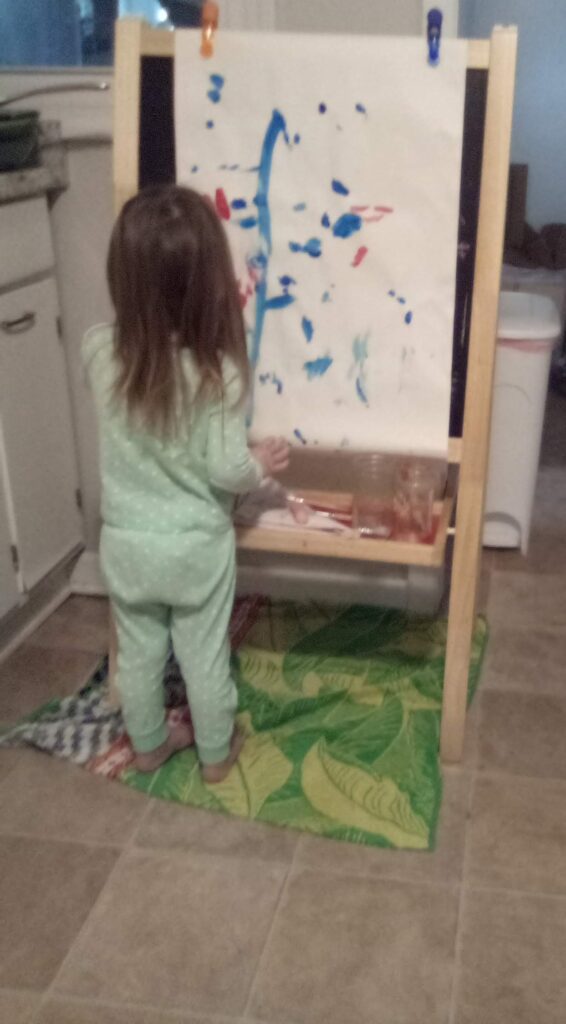
Sensorial
Sensorial activities are designed to help refine the senses and give a wide range of experiences. It is through experiencing their environment sensorially that a child begins to classify and study (quite organically) the world around them from birth and on. An intentional environment paired with sensorial experiences gives the child an opportunity to build focus and lays the foundation for further language exploration, mathematical work, and the scientific mind (which the environment fosters quite organically!).
We officially started our 3-6 materials this past March and introduced the first sensorial material–the cylinder blocks. Initially I brought all four blocks out and displayed them on the shelves but I quickly learned that in the home environment, it was best to introduce one at a time. We still only have two out on our shelves and she mostly chooses to work with one at a time although she can ad does choose two at times. This summer I plan to introduce a third and see how she does. We may rotate them if she is not ready for three out at the same time.
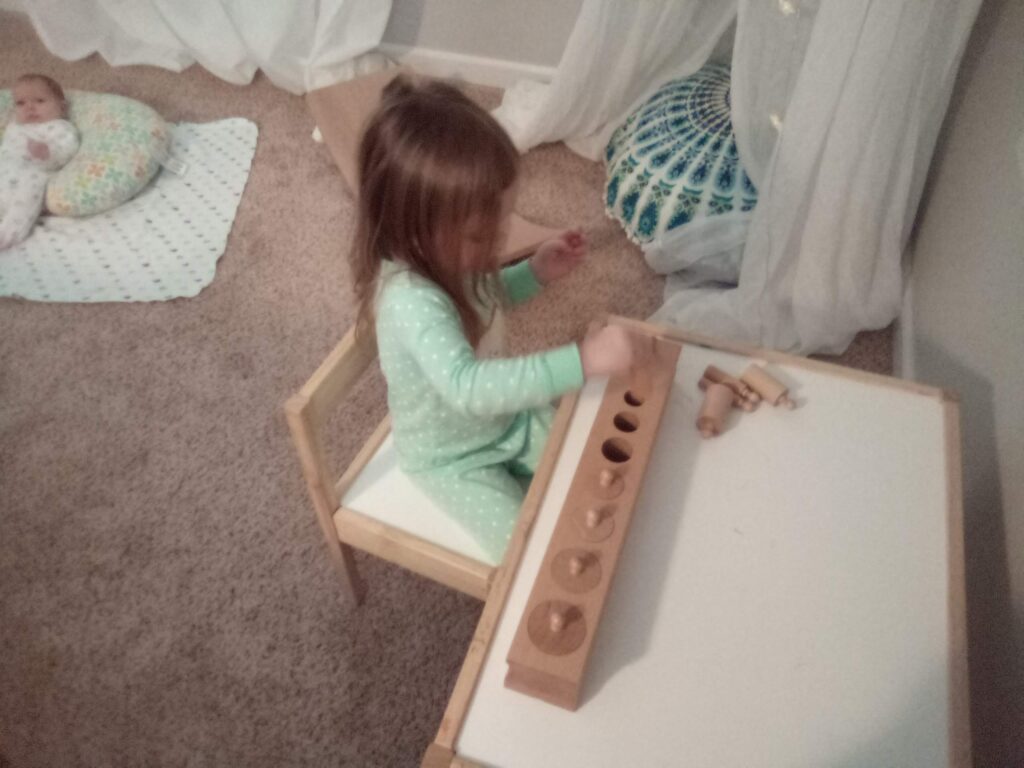
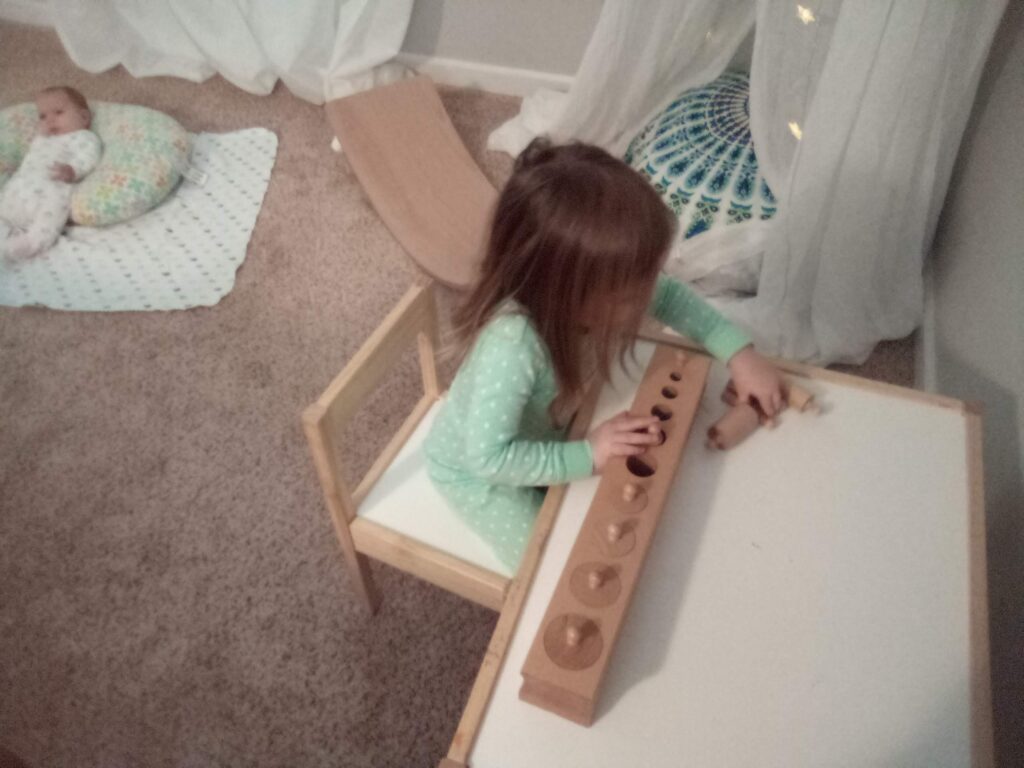
The Pink Tower is the second sensorial material. It is still a favorite on our shelf! I just recently had to put up the smallest two blocks because our 6 month old is on the verge of crawling. For now we are seeing how it goes to have to ask for them. No problems yet.
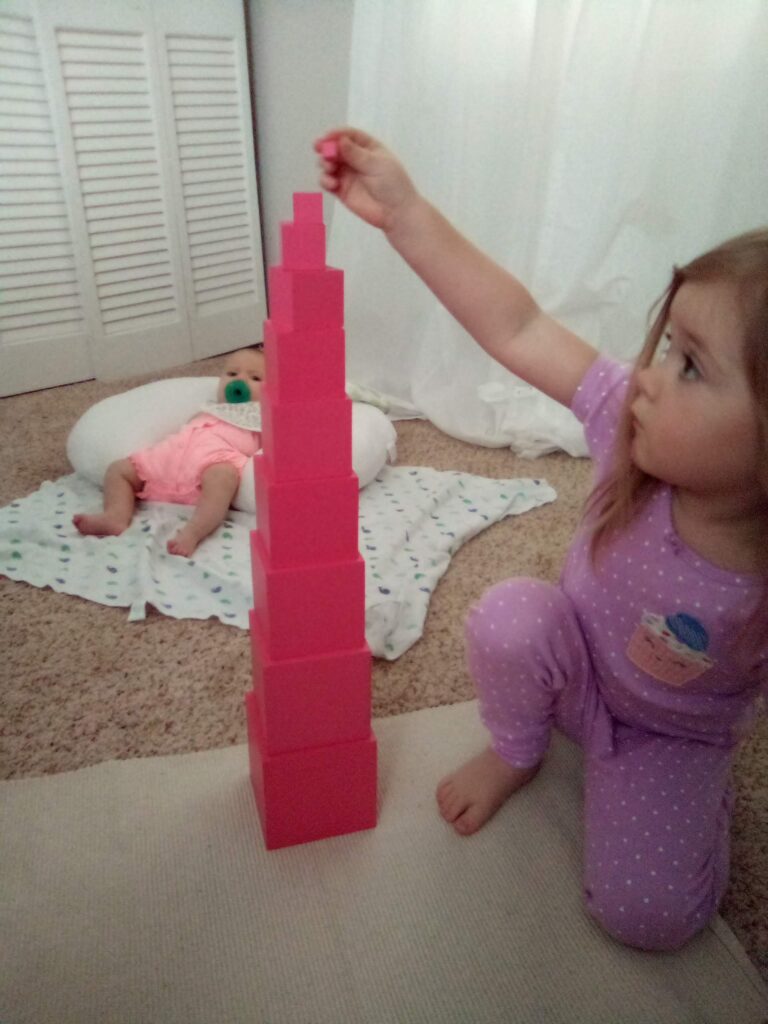
For our third sensorial material we did the Geometric Solids. Our oldest daughter LOVES her board book, “Montessori Shape Work” and so we went ahead and brought these out. She loves to play with these and although we have paused on formal modeling (unless she asks) she still remembers several names. We will review and practice together when we get back to daily circle time.
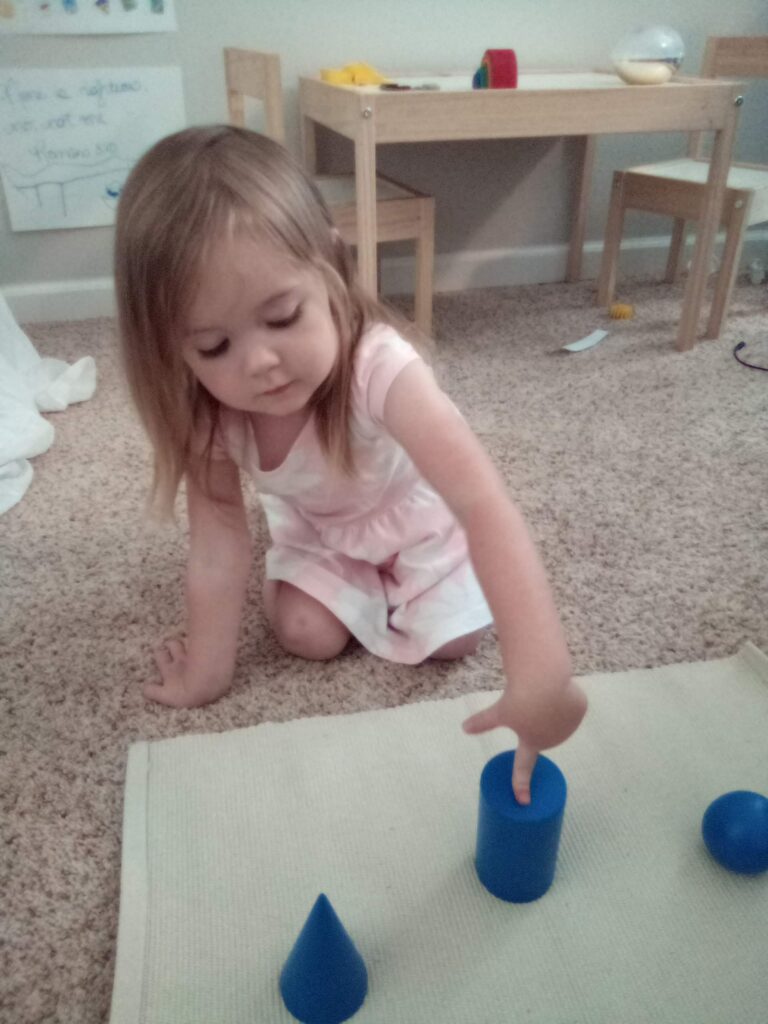
For the final sensorial material of the 2019-2020 school year, we introduced the color tablets. She LOVED these and they are still on the shelf. We did quite a bit of work with color and have introduced box 1 and box 2. Since the colors overlap from the two boxes and we do not need to have them on the shelves at the same time, we just grabbed the second color box. While we got the rest of our sensorial materials above from Kid Advance, we went with an Etsy shop for the tablets because I wanted wood. Click here to see the shop that makes the ones we use and love.
Mathematics
Most of the early mathematical work the child does is organic meaning it is naturally experienced within the home environment. For example, you ask your child to bring you one tomato from the refrigerator or allow her to pick three flowers from the garden. You count steps, objects and talk about how old they are. Math is organically interwoven into our life. If we are present with our children, we can naturally see this unfold.
In addition to this we have the board book, “Montessori Number Work” frequently in our book rotation but our oldest honestly doesn’t gravitate towards this one often. Outside of this, we have tried a couple things on the shelves (and have pictured them below) but because there is not much of an interest I do not plan much in the way of shelf work right now. Again, we frequently count things that are on the shelf or encountered in our day but she is not in formal math work yet and certainly has not begun the mathematical materials from the 3-6 classroom. Before introducing these, she needs to master the red rods which is a a sensorial material. In fact, there is quite a bit of pre-mathematical work within the sensorial materials and they lay the foundation for future mathematical work.
Here are the few math activities that did grace our shelves.
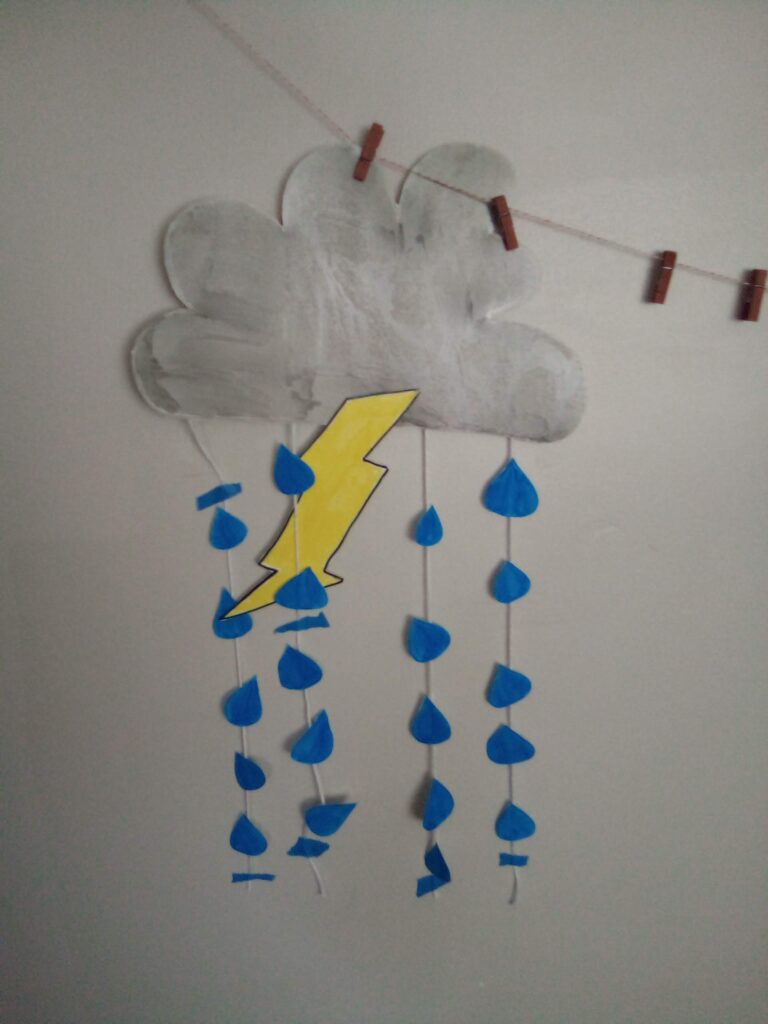
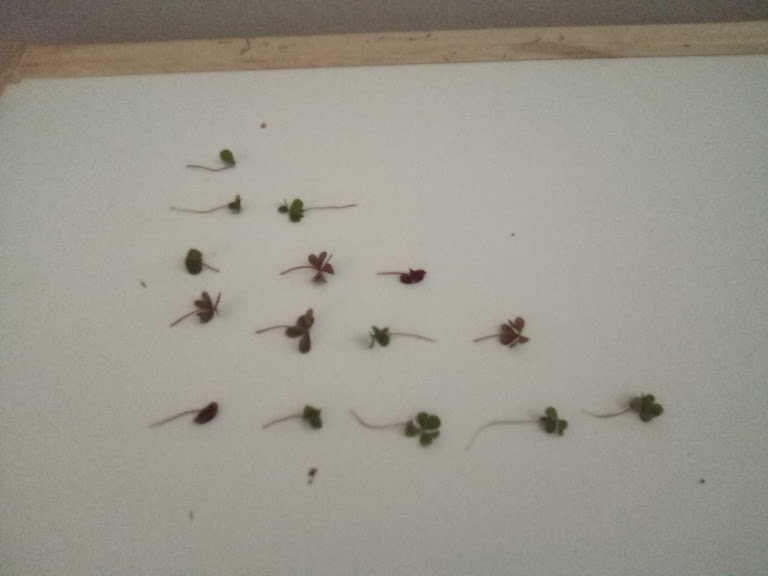
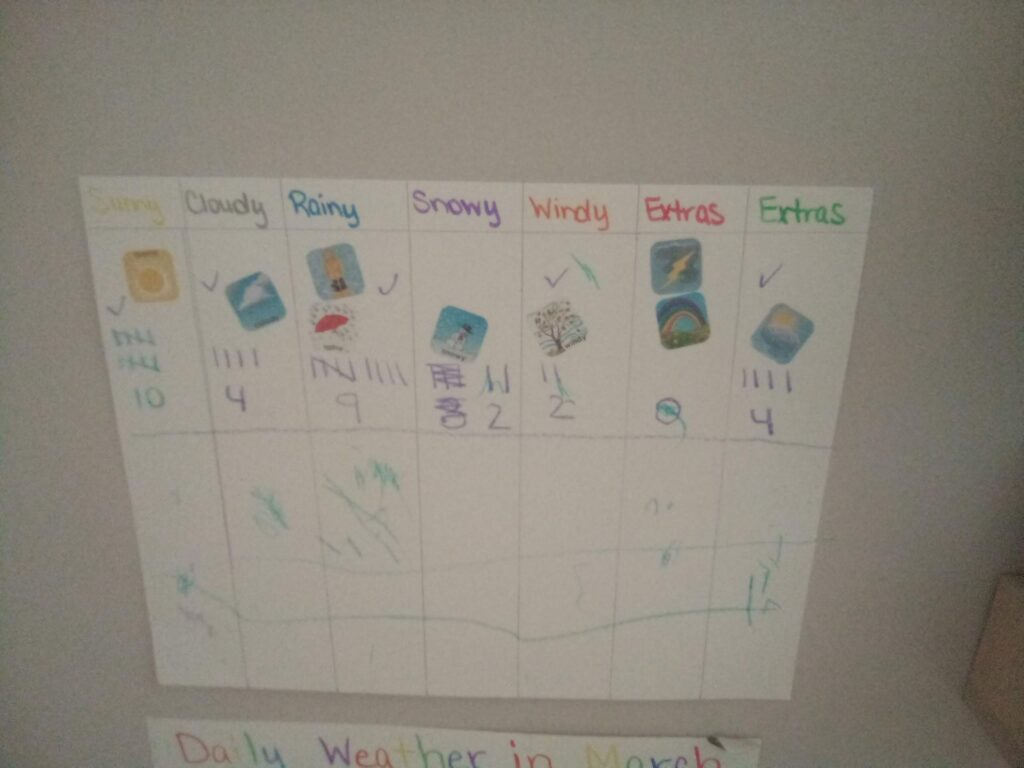
Themes
This year we did mostly seasonal themes on our shelves. Some of them will be build upon or reused in some way throughout our 3-6 Montessori Journey. Each theme lasted about 3 weeks on the shelves. This is not a comprehensive list of everything that we did or even had on our shelves. It is just the work that went along with the theme.
Ocean
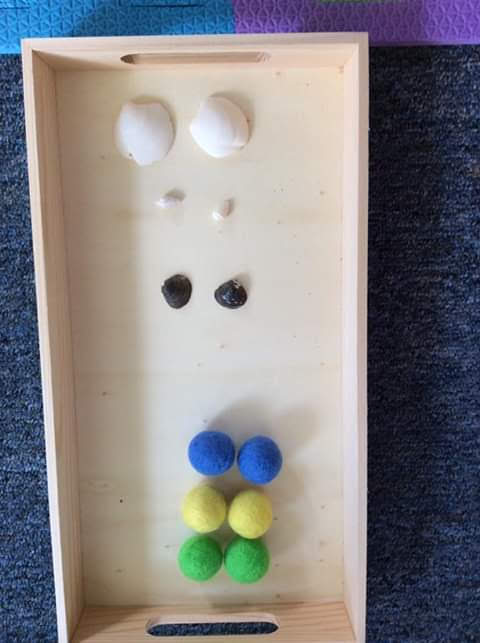
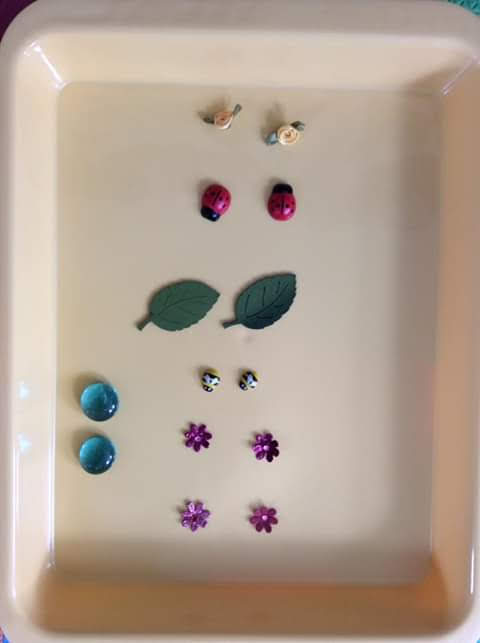
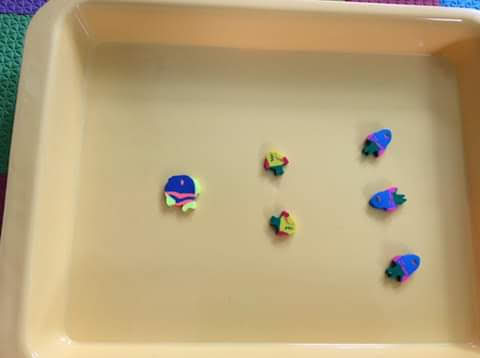
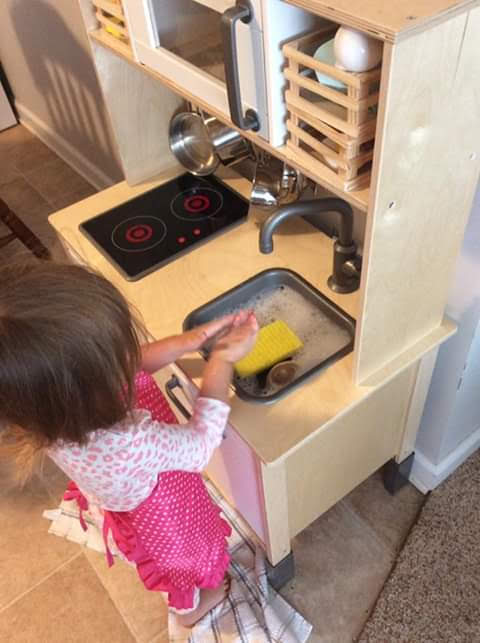
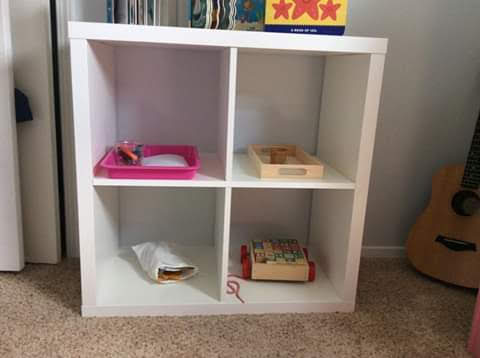
We did this theme in August 2019. Our family vacation was end of July/Beginning of August. The timing was perfect because we were able to be hands on and just explore the beach itself while we were there. The real thing is always preferable when learning. Here is our list of Ocean activities we did at home:
- Mystery bag of Sea Creatures – This is a bag of language objects. You introduce one at a time (this is a seahorse for example) then you can use for sound games and guessing games. They are of course used for general play as well.
- Three part Sea Creature Cards – I made these with Sea Creatures we have to use for matching object to object and then card to card. We are not using the words yet so they were not on the shelf.
- Cards and Counters – I made my own number cards for 1, 2, and 3 and paired it with these cute little fish erasers we have. I put out a different type of fish for each number. She enjoyed this a few times but did not gravitate towards this work often. She understood it and could do it unprompted.
- Washing Sea Shells – We were given a large bag of sea shells and collected our own to add to it. She loved washing them and often chose to set this up in her little kitchen. She would often just play with the sea shells without washing as well.
- Ocean Books on the shelf – We had a couple books about the ocean on the shelf. One was a counting book with mermaids, one was a book about a little blue boat, the other is one from Chick-fil-a called, “Deep Under the Sea”.
Apples
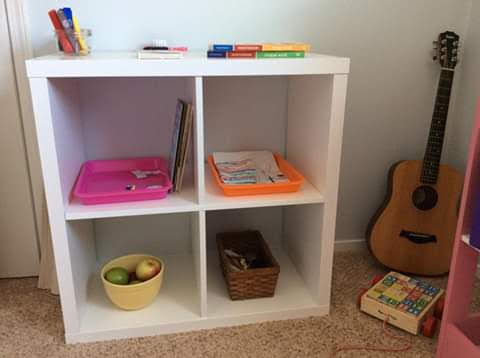
This was a cute unit. I had wanted to add a tens counting board (which is more Waldorf). It is a great way for little hands to play and learn in a hands on way to identify numbers as quantities. I am back and forth on whether I will add one to our rotation this year or not.
I grabbed this printable resource from Trillium Montessori. At 2 much of this was not of interest for long but we will incorporate it into our fall shelves through out 3-6 Montessori classroom journey at home.
Here are our activities for this unit:
- Apple Tens Board (never made it to our shelves… I actually had ordered a custom one on Etsy but it fell through with the seller.)
- Sort Apples by Color/Object to object matching – Real Apples (red, yellow, green)
- Sorting by Size (small medium and large apple pictures from printable resource)
- Apples and Counter – 1, 2 and 3 plus real apples and then move to laminated pictures (This was not of much interest. She understood the concept but did not enjoy the work.)
- Introduce Cutting with scissors – I used scraps and then the cutting strips from the printable
- Apple Stamping – Cut apple in half and stamped with paint
- “Aeh” as in Apple – I introduced this sandpaper letter but in retrospect wish I had just done the sound work without the letter.
Fall
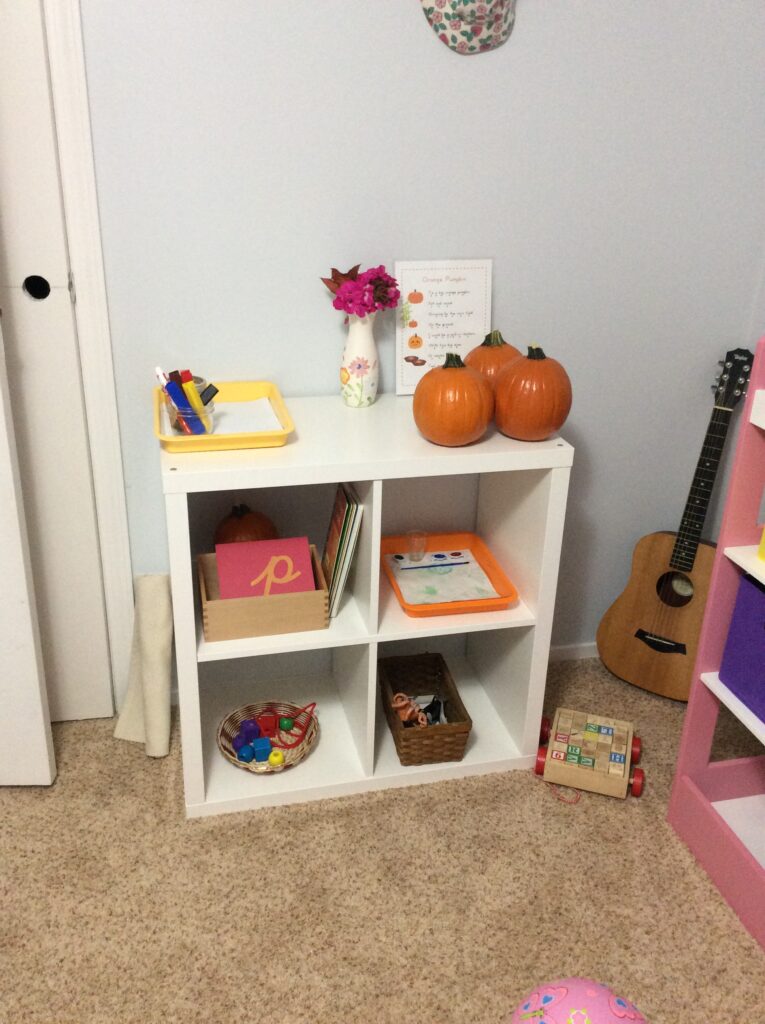
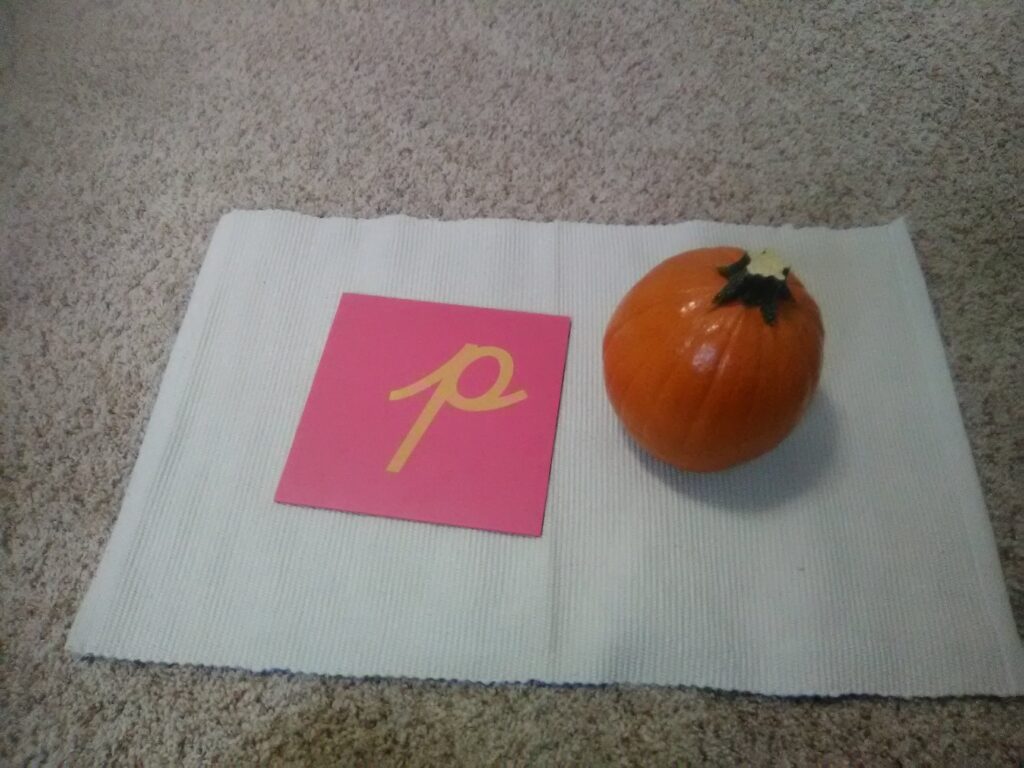
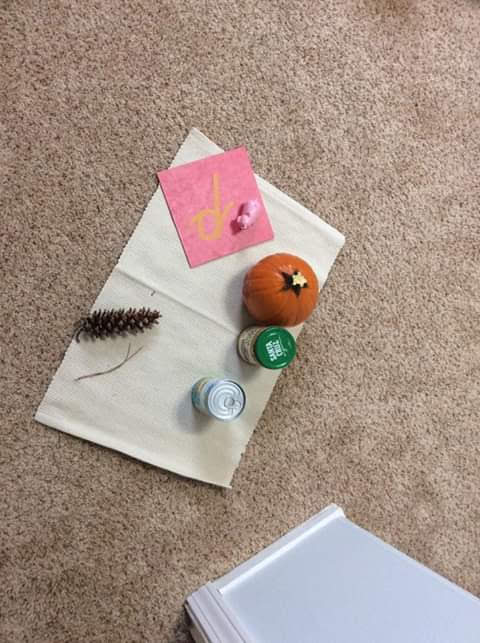
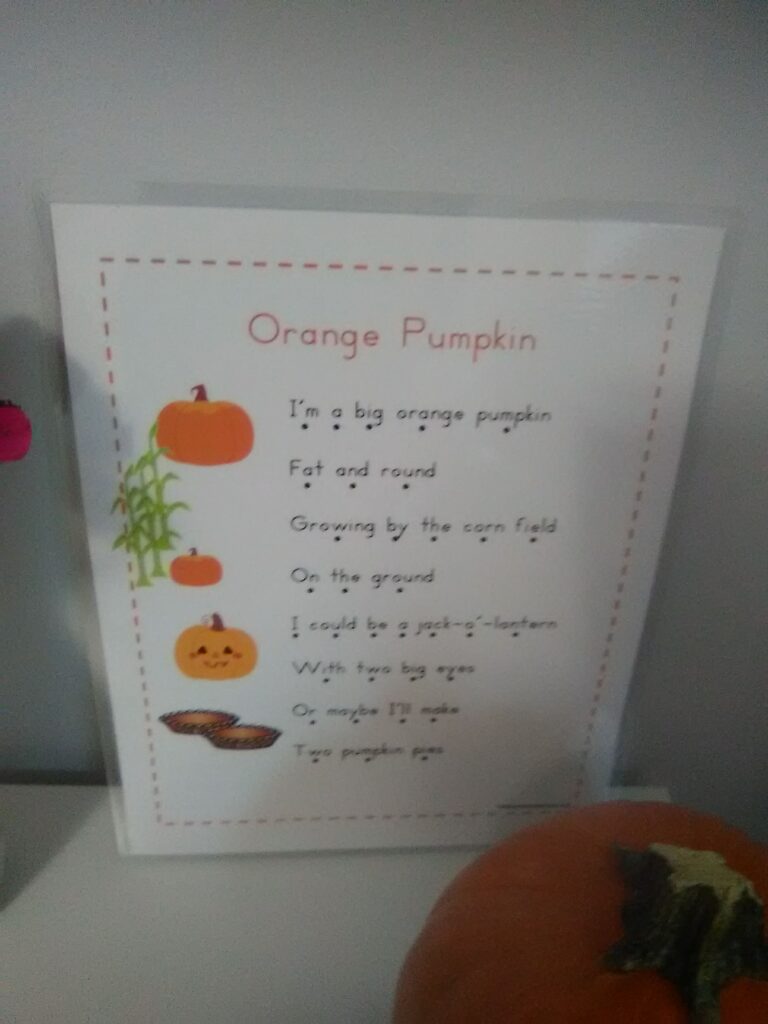
I got this printable from Trillium Montessori for this unit. There is SO much included that I will use throughout the 3-6 classroom. I didn’t use much of it at 2 but I am very happy with it and it will be a great resource over the next few years.
Here are the activities from this theme:
- Tens board with acorns (again, did not happen)
- Autumn Leaves Poem (print out from packet)
- Fall language objects – we collected fall things outside and placed them in a basket to bring inside and explore. We used them for sound games, matching and counting.
- I spy/Sound games outside
- Introducing Seasons – Seasonal mat, seasonal pictures
- Four seasons sorting – sorting seasonal objects on our seasonal mat
- Sorting pumpkins and gourds by type
- “Puh” as in pumpkin (again, I would not do alongside the sandpaper letter this time; just beginning sound in sound games)
Advent/Winter
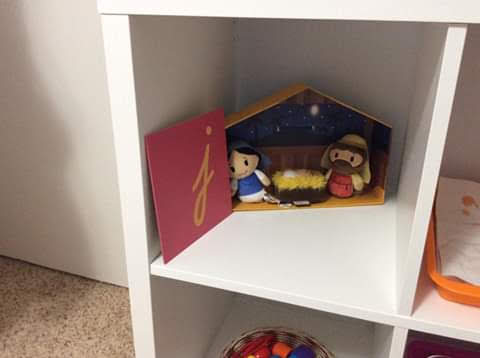
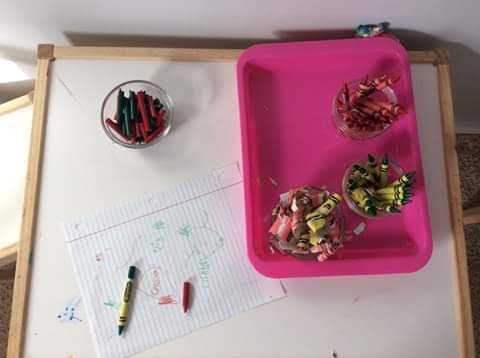
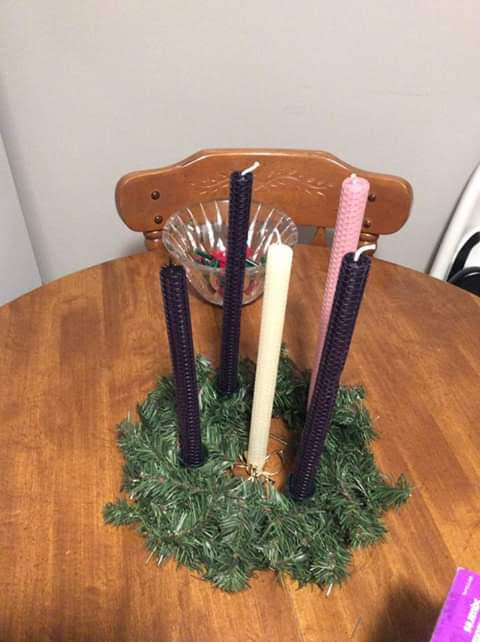
- “Juh” as in Jesus – Itty Bitty Nativity plus story telling and sandpaper letter BUT I would just do the sound at this stage with my tot the second time around.
- Pealing Work – peal crayons and break crayons to melt into mold and gift to friends
- “Wuh” as in winter (last sandpaper letter I did… I backed off after this. She was interested in the sounds but not the letter work.)
- Daily Story in Jesus Storybook Bible
- Advent Candles (family devotional and then reinforced throughout the week)
- Winter Found Objects Language Basket (collected winter objects outside and inside the home)
Valentine
- Lacing/buttoning hearts – I cut out red hearts with a hole in them. Then I sowed a button on piece of ribbon. Lacing and buttoning work!
- Valentine’s Day cookies – she helped bake and decorate cookies… practical life!
- Heart stamping (toilet paper roll shaped like heart)
- Valentine’s day Play-dough – make play-dough together, use food coloring to make pink, add sprinkles on the side to play with on shelf with cookie cutters. Here’s my favorite play-dough recipe to make at home.
Weather/Noah’s Ark/Rainbow
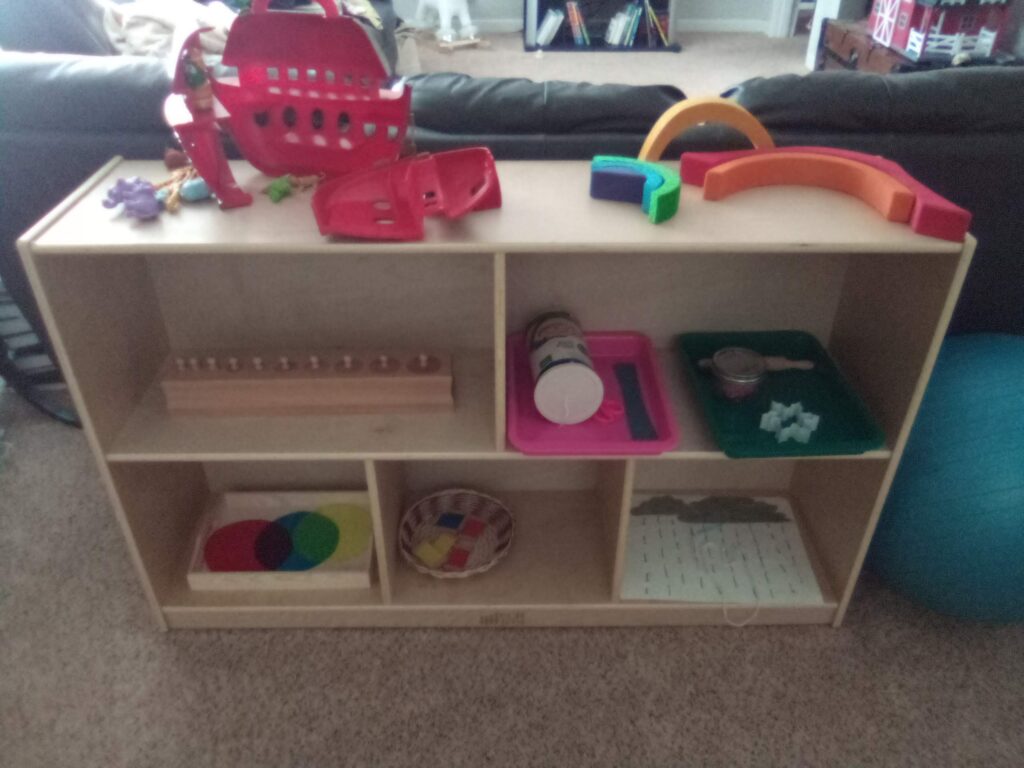
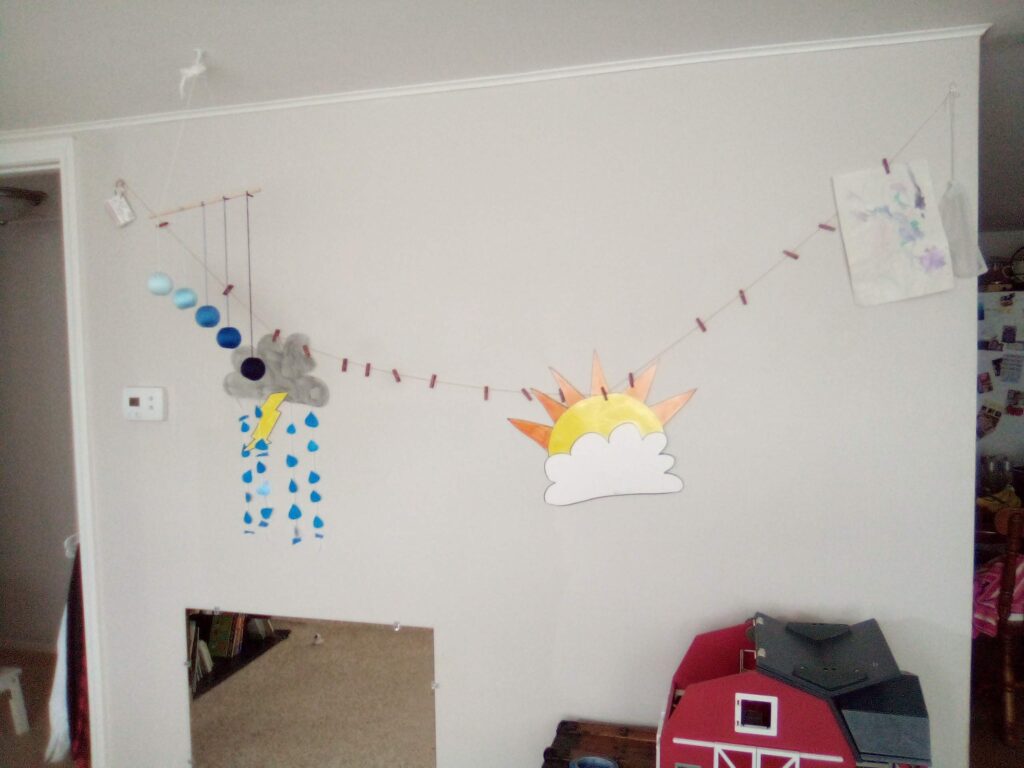
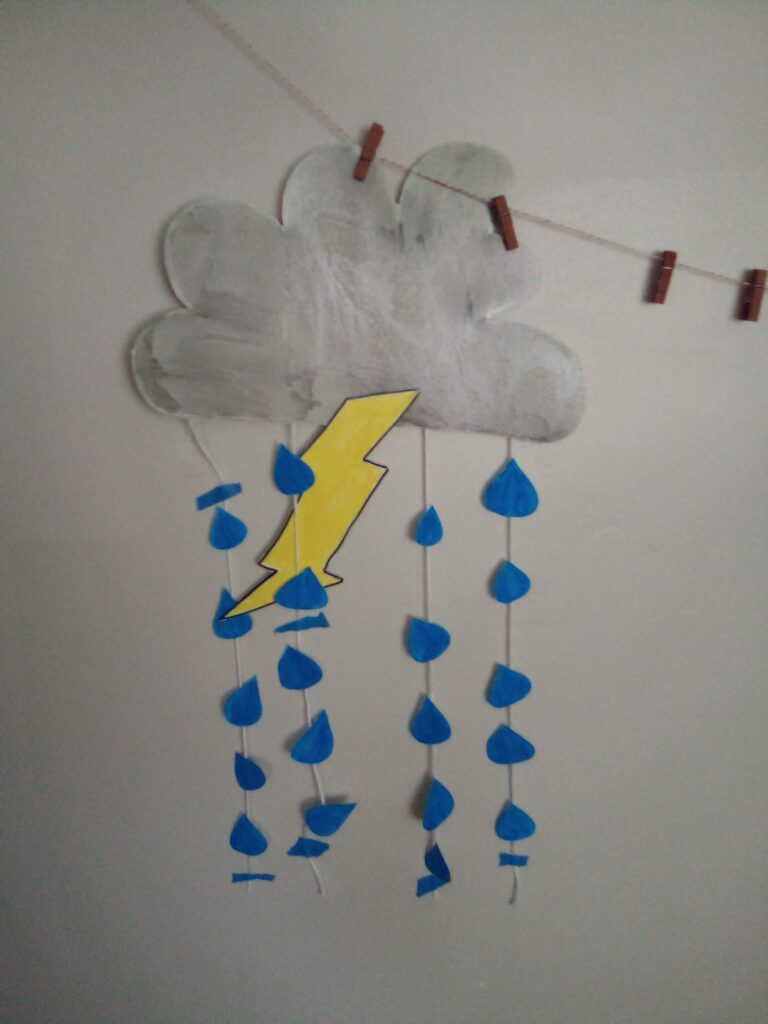
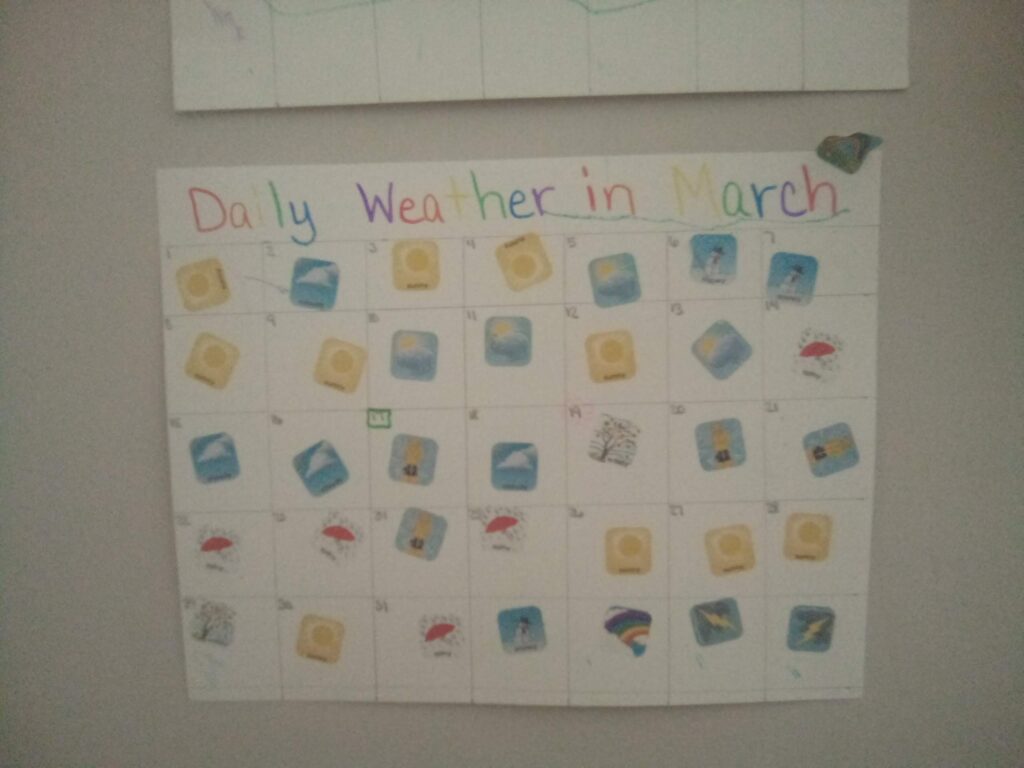
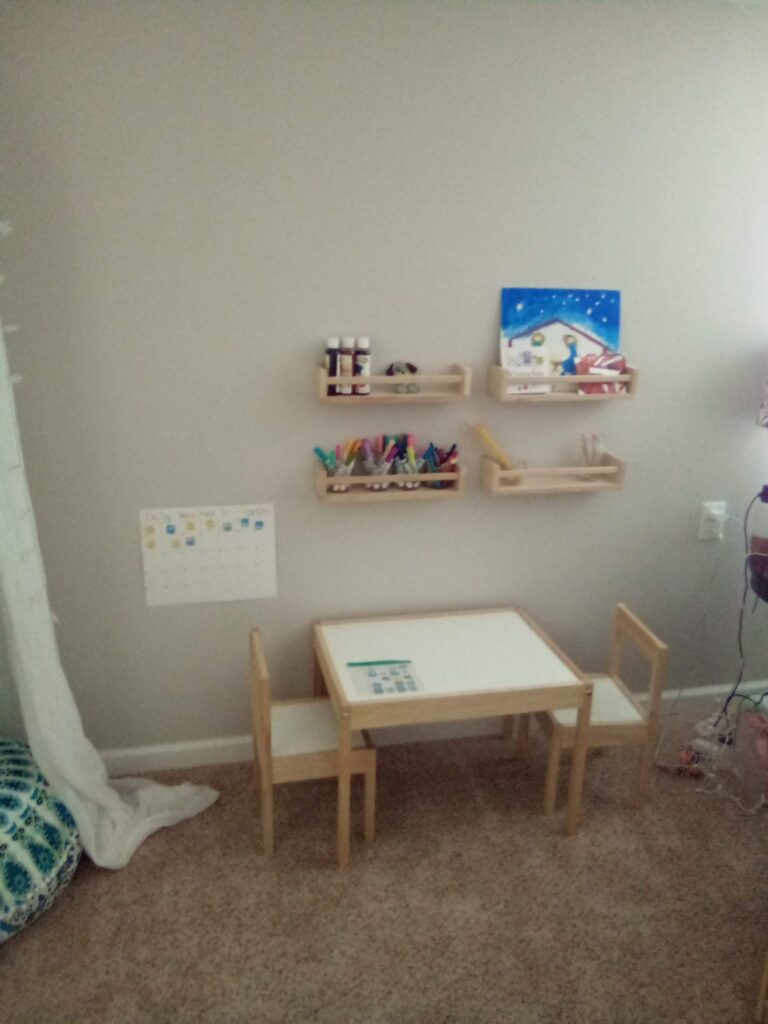
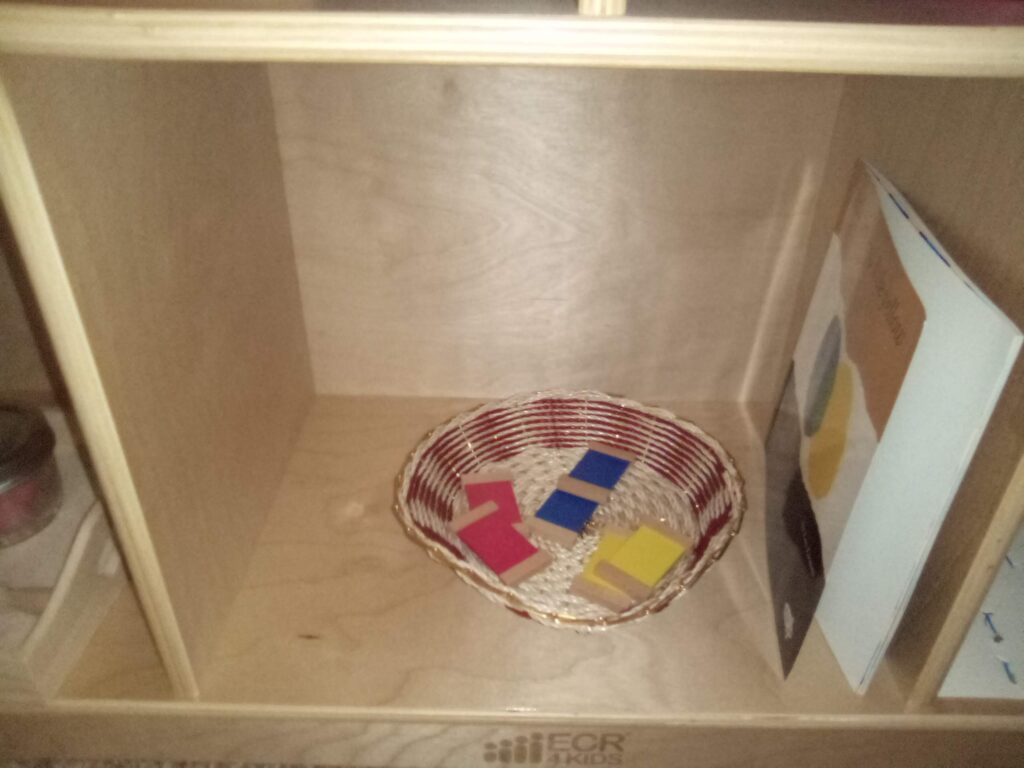
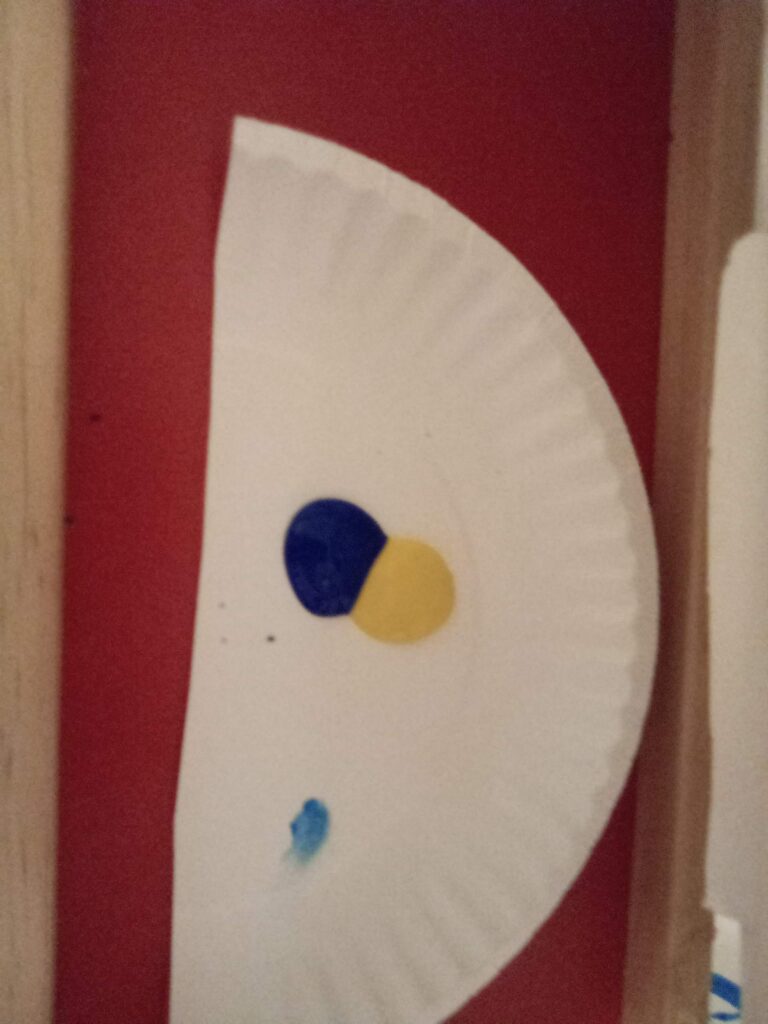
- Introduce Color Tablets (first set/primary colors)
- Read: Mix it up
- Paint: Color mixing with three primary colors
- Weather lesson (types of weather + what weather is)
- Pom Pom transfer activity on shelf (blue pom poms + tweezers)
- Weather Matching – Picture to picture
- Weather tracker – Calendar for March + stickers for weather
- Weather Chart – Weather stickers; tally at end of month
- “Rain” painting with watercolors – use dropper and let colors run down paper to look like rain
- Primary Colored Circles (transparent plastic circles – exploring color mixing)
- Noah’s ark toy on the shelves – story telling and hands on with the Bible play
- “Little Blue and Little Yellow” by Leo Lionni – Such a cute book on color mixing!
- Exploring colors of the rainbow (big and little rainbow block stackers… both are Grimm)
- Noah’s Ark story sequencing cards (DIY)
- Color mixing with basters + water and food coloring
- Rainbow Sensory Bottle
- Introduce Color Box 2 (Color Tablets)
St. Patrick’s Day/Spring/Easter
- St. Patrick’s Day Story (print out and do during Circle Time for a week)
- Trinity Poem (3 Leaf Clover)
- Clover Counting/Counters
- Spring Poems (Incorporated into Circle Time or Reading Time)
- Bunny Painting (paper towel rolls taped together to make a bunny shape)
- Decoding Secret Easter Messages (I wrote on paper with a white crayon and she painted with water colors to find the messages)
- Story Telling + Peg People for hands on element (Holy Week)
- Holy Week Story Cards (Story Telling/Sequencing)
Butterflies
This theme is still on the shelves! She has been gravitating towards it for months. Huge hit. I grabbed this resource to use throughout the 3-6 classroom. I used the parts of the butterfly this time around. Next spring I will use more from this.
- Butterfly Montessori Puzzle
- “From Butterfly to Caterpillar” by Deborah Heligman (We LOVE this book. Highly recommend and totally Montessori friendly!)
- “A Butterfly is Patient” by Dianna Aston (SUCH a fantastic book! We seriously LOVE everything by her!)
- Toob Butterflies
- Safari Butterfly Life Cycle
- Butterfly Garden (We started one together! I will do a separate post on this! I love Joyful Butterfly to help with planning. I ordered some seeds and plants from there and was very happy!)
- Anatomy of Butterfly Resource Pack from Green Urban Creative
- Butterfly 3 Part Toob Cards (Free Resources on Living Montessori Now)
Birds
I had planned way more for this unit. It hit at the same time as the shut down due to the pandemic in our state. At first we continued to be quite structured but the addition of Daddy working from home shifted our schedule a bit and we got a little messy…. BUT we have had so much fun bird watching and reading together. I will do more with this next Spring!
- Bird Montessori Puzzle
- Bird Identification Book + Bird Watching
- “A Nest is Noisy” by Dianna Aston
- Toob Birds (still not on the shelf but I know she will love them!)
Next year we are making a bird house and a bird feeder! We will probably do a hummingbird feeder as well!
Whew. That was a fun year and a long post! Hope you find it helpful as you reflect and plan for the 2020/2021 School Year! My next post will cover our plans for this coming year.
XOXO,
Amanda